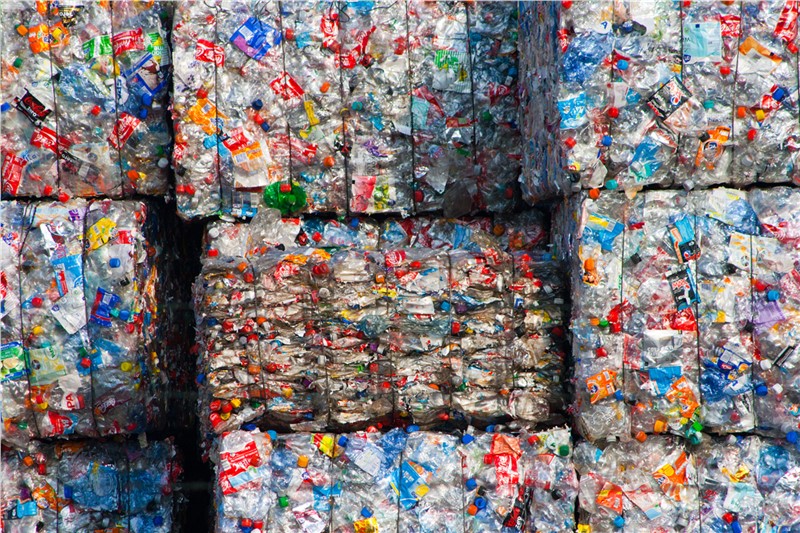Thursday 10 November 2022, Amsterdam

By requiring fewer emissions than virgin plastics, choosing more sustainable packaging materials reduces waste and lowers the carbon footprint. It is the superior packaging material for future industries as it strives for a more circular economy. Greenhouse gases are a major contributor to rising pollution levels in our environment. Because the entire process of producing plastics requires the use of oil, a large amount of greenhouse gases is produced. Recycling plastic rather than manufacturing it from scratch reduces the emission of harmful greenhouse gases. This saves energy and protects natural resources: the production process of virgin polymers requires natural resources such as water, oil, natural gas, and coal as raw materials.
How has COVID-19 had a significant negative impact on the Post-Consumer Recycled Plastic Market?
While the world grapples with the far-reaching consequences of the COVID-19 pandemic, ongoing environmental crises have been largely ignored. The scarcity mindset induced by the pandemic is one reason for this shift in priorities. Scarcity is the sensation of having less than what is required, and it causes people to prioritise short-term needs over long-term ones. Scarcity during the pandemic can reduce people's willingness to engage in pro-environmental behaviour, resulting in environmental degradation and an increase in the likelihood of future pandemics. To protect pro-environmental behaviour, it argues that it should not be viewed as value-laden and labour-intensive, but rather as actions that address a wide range of human needs, including pragmatic actions that conserve resources, particularly during times of scarcity.
Recycling and Sustainability Are Being Aided by Artificial Intelligence and Robots in the Business World
Robots and artificial intelligence (AI) are assisting the business world in dealing with recycling and sustainability. This is due to the coronavirus pandemic, not more research into this technology. There is currently no perfect reverse logistics robot to solve the used plastic bottle problem. However, robots and AI systems are being developed to improve assembly line separation of useful or recyclable plastics from those that cannot be recycled. Human workers are also being replaced by robots in the lifting, sorting, and transportation of packages. In some of these supply chain operations, robots outperform humans. When the pandemic is over, robots and AI systems will be there to help.
Plastics with Recycled Content Are Being Mandated by Governments
Recycled content regulations have emerged as an economic tool to help drive demand for post-consumer resin (PCR), advance markets for recycled plastics, and drive a circular economy. Furthermore, the implementation of PCR minimum requirements can increase the value of recycled materials, which can help improve recycling economics and drive investment and innovation.
Materials collected and recycled (often through curb side programmes) so that it can be used as post-consumer resin in new applications, such as plastics (e.g., packaging, products, etc.). They are not recycled and are commonly made from petrochemical feedstock (e.g., natural gas, crude oil, etc.). With this significant regulatory shift, retailers must start preparing their supply chains for these requirements as recycled content regulations are developed and implemented across North America. Recycled content minimum requirements are increasing from California to Europe in an effort to increase the supply of quality PCR and drive a circular economy through increased plastic waste collection, processing, and recycling.
Where are the Market Opportunities?
Reusing Plastic Waste could become a Significant Source of Profit for Chemical Companies
In response to public outrage over global plastic pollution, the chemical industry is beginning to mobilise on the issue. How industry leaders are moving beyond the use-once-and-throw-away mentality that has defined the plastics industry's history and embracing a broader definition of product stewardship that includes dealing with plastics waste. It is not only what society expects and is becoming a requirement for the industry to keep its operating licence, but it could also represent a significant and profitable new business opportunity.
Chemical recycling or pyrolysis plants will need to be built locally and integrate their products with refineries or chemical plants. According to the American Chemistry Council, hundreds of new facilities will need to be built in North America to recycle just 25% of the post-consumer recoverable plastics that are currently being disposed of in landfills.
Plastics Are Repurposed Rather than Recycled
Plastic recycling, unlike glass or aluminium recycling, does not "close the loop" because most postconsumer plastics cannot be reused. Instead, if a plastic was previously used to contain milk, it would be recycled into lower-grade products such as jacket fill, fleece, carpet, and plastic lumber. The same piece of plastic can only be recycled about 2-3 times before it degrades to the point where it is no longer usable. Even if it were to be used for the same purpose, it would be combined with virgin resin to improve its quality. Recycling plastic, in essence, only extends its lifespan and delays its eventual disposal. All plastic eventually ends up in a landfill or incinerator.

ASDReports.com contact: S. Koomen
ASDReports.com / ASDMedia BV - Veemkade 356 - 1019HD Amsterdam - The Netherlands
P : +31(0)20 486 1286 - F : +31(0)20 486 0216